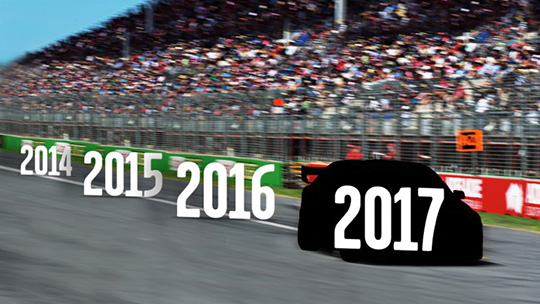
Plans to revamp V8 Supercars could revealed in the coming months after CEO James Warburton confirmed he is drawing up a white paper on what the next generation V8 Supercar might look like and what form the Championship could take.
With Ford, Holden and Toyota to cease Australian operations by 2017, Warburton is exploring what this means for the automotive landscape. As part of his investigation, Warburton is meeting with manufacturers involved in the Championship as well as those outside the sport. The initial findings will be presented to the V8 Supercars Board to consider in the next few months.
Warburton says he is keeping an open mind on what the future potentially holds for the V8 Supercars Championship, but is insistent there needs to be respect for the achievements, the success and stability the past two decades has delivered.
“We have to be very mindful about our heritage, our past; and the fact that we’re about high octane entertainment,” Warburton told v8supercars.com.au.
One of the options being actively considered, is permitting two-door coupes either alongside or in place of the sedan. Only four-door body styles have been allowed since 1994, but a move to coupe body styles would open up the series to more variety of models and broaden the appeal to existing and future manufacturers and international possibilities.
“What we’re working towards is a 2017 generation ‘two’ and a completely different landscape without manufacturing,” Warburton explained.
“So everything’s on the table and that’s why we’re talking to manufacturers at the moment, participating and non-participating.
“The beauty of the landscape we have is that anything is possible. So you could look at a different configuration, different power plants.
“That’s not to say we are suddenly going to make wholesale changes, it may be that we decide to stay as is.”
Determining how manufacturers could gain value from being involved in the Championship is also a key part of discussions. Warburton said that could mean “a completely different approach to how they’re using the platform” and “what we can do and what they should be doing”.
“People love coming to the races, they love the sound, they love the show we put on, so the relevance of this platform is the participation and the audiences we achieve and then how you use those to actually sell cars and sell product.”
Warburton said Australia’s changing demographic also needed to be considered in the decision whether or not a V8 engine remains integral to the sport.
“Let’s look at the entire framework,” he said. “The ethnicity of the country’s changed. We’ve got a third of the population that weren’t born here and have probably never driven a V8. So all I’m saying is we need to look at it from an overall point of view and think about what we’re doing and where we are heading.
“I don’t think you’d rule anything in, or out,” Warburton added. “You’ve got to be very careful about it – the great thing about V8 Supercars is the act has been very well defined; what we’re about and the show we put on. And so you’d be reticent to mess with too much of it.”
Consideration will also be given to the longer term strategy for the way V8 Supercars race internationally. It’s likely the Championship will continue to be paid sanctioning fees by overseas promoters, but other concepts such as franchising to other continents will be looked at, although Warburton says focusing on the local market remains the priority for V8 Supercars.
“I think we’re a little way off going down that tunnel,” he cautioned. “We’ve still got a number of things that we’re looking to achieve here.”
